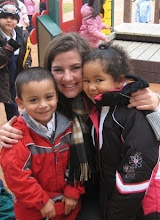 In his narrative "Safe Area Gorazde," Joe Sacco uses a comic book style to present his argument. This uncoventional method however, works perfectly and, in my mind, has only strengths. One might think a comic book, in its very definiton, could dismiss the main argument of a narrative as just a story, just pictures. However, Sacco manages to rise above this dismissal and presents a clear-cut, resolute argument with a personable, visual aid. He manages to make a comic book more than just a story with pictures.
In his narrative "Safe Area Gorazde," Joe Sacco uses a comic book style to present his argument. This uncoventional method however, works perfectly and, in my mind, has only strengths. One might think a comic book, in its very definiton, could dismiss the main argument of a narrative as just a story, just pictures. However, Sacco manages to rise above this dismissal and presents a clear-cut, resolute argument with a personable, visual aid. He manages to make a comic book more than just a story with pictures.The fact that Sacco is able to accurately represent each character's unique background and provide the exact details of the people he writes about allows us as readers to connect to each character on a very personal level, therefore making the despicable crimes they were victimized by that much more heart-wrenching. As I read, I felt myself standing in Sacco's shoes, living in Edin's house, listening to Riki's singing, taking orders for Levi's from the women, and hearing and seeing the terrifying effects of ethnic cleansing on Yugoslavia. Seeing the people's faces, REAL people that I know Sacco spoke to, made me feel like I was part of this story. This effect could not have been achieved without the comic book style of the narrative.
Furthermore, Sacco's use of the comic book presents the story in the ironic way it needs to be presented in order to stir people up they way they should be about such a devastating issue. Tradionally, comic books have been used for mindless tales of super heroes and other such trivialities. However, Sacco's narrative is about an issue that is nothing but trivial - though some Americans may see it that way. On page 53, a woman asks Sacco if people know about the tragedies of Gorazde in America. He lies and says yes. I think in a way this is the thesis of Sacco's entire narrative. People in America just don't know about what's happening in Gorazde. To way too many people, it is just a trivality. And it shouldn't be this way. Sacco uses the comic book to prove to people that what they are treating as a triviality, isn't. It is a serious, crushing, unbelievably sad issue.
There are real people behind the crimes of ethnic cleansing. People with stories, histories, and emotions. People who soak up American magazines and songs, demand American clothes, work to get degrees, go to school, etc. Sacco shows all of this with his personal interview and interactions, and with every frown line and crease on the faces of the characters he draws. He draws violent imagery in a comic book style, drawings that make one feel sick to the stomach. But he gets his point across. People in America don't pay enough attention to the violence going on around the world. Too much is written off as "Oh it's going on over there, so I don't need to worry about it." Sacco shows that yes, everyone does need to worry about it. He presents horrors such as people getting their throats cut or being thrown off a bridge as just one more square in a huge comic book, an ironic but effective way of presenting his argument. The ethnic cleansing that went on in the former Yugoslavia in the 1990s and that still goes on today in some parts of the world are huge parts of who we are as humanity, and should not be written off. People treat these disasters as just stories, just single squares in a comic book. But they aren't. They are serious and horrifying.

